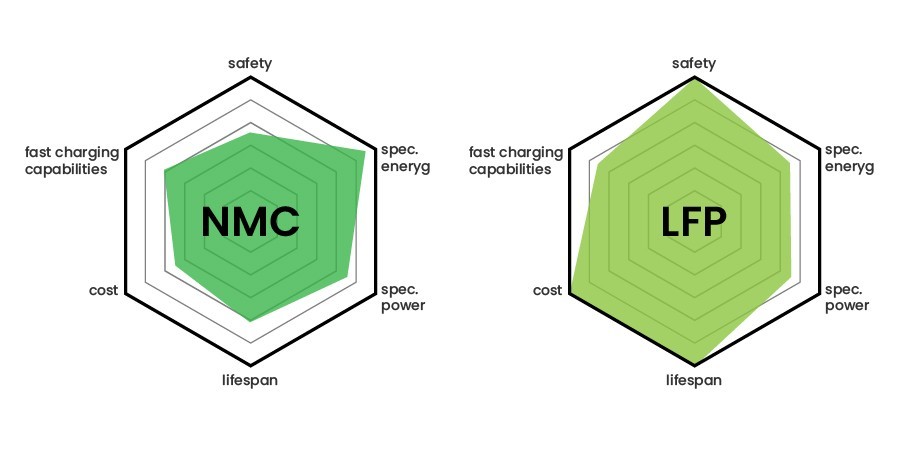When it comes to portable power stations, some people have recently found themselves torn between the ALLPOWERS R600 and S700 models. Allow me to guide you through a comparison of these two impressive units
1. Design

The R600 sports the classic rounded edges that I've come to expect from ALLPOWERS products, while the S700 boasts a more rugged look with its angular lines. Both feature handy handles for easy carrying, which is a must for me on outdoor adventures.

In terms of size and weight, the R600 comes in at approximately 11.2 x 7.6 x 7.5 inches and weighs around 12.8 lbs, whereas the S700 measures about 10.4 x 5.5 x 7.1 inches and weighs roughly 11.9 lbs.
2. Battery Capacity and Maximum Output Power

The R600 packs a punch with its 299Wh Lithium Iron Phosphate battery (LFP), delivering up to 600W of power (with a surge capacity of 1200W). Meanwhile, the S700 houses a larger 606Wh Nickel Manganese Cobalt battery (NMC), capable of supplying up to 700W (with a surge capacity of 1400W).
Here is a quick comparison for you to better understand the capacity:
With the R600's 299Wh battery capacity, you can expect to charge a 50W camping lantern approximately 4 times during a camping trip. On the other hand, the S700's larger 606Wh capacity allows it to charge the same lantern around 8 times, providing double the power for extended adventures.
Similarly, if you're an avid drone enthusiast like me, you'll appreciate the power these stations offer. The R600 can charge a 60W drone battery roughly 3 times, while the S700 can handle approximately 7 charges with its higher capacity. This means more time in the air capturing breathtaking footage without worrying about running out of juice.
| Appliances | Running Time (R600) | Running Time (S700) |
| Mobile Phone (15W) | Approx. 14 times | Approx. 28 times |
| Projector (50W) | Approx. 4 hours | Approx. 8 hours |
| Camping Lantern (20W) | Approx. 10 times | Approx. 21 times |
| Electric Fan (75W) | Approx. 3 hours | Approx. 6 times |
| Speaker (10W) | Approx. 21 times | Approx. 42 times |
| Drone (60W) | Approx. 3 times | Approx. 7 times |
| Digital Camera (18W) | Approx. 11 times | Approx. 23 times |
| Laptop (90W) | Approx. 2 times | Approx. 5 times |
3. Output Ports
| R600 | S700 | |
| AC Port | 2x | 2x |
| USB-C Port | 2x | 3x |
| USB-A Port | 2x | 1x |
| Cigarette Lighter Port | 1x | 1x |
| DC Port | ○ | ● |
| Wireless Charging Pad | ● | ○ |
| Emergency LED Light | 1x | 2x |
Both models feature 2 AC output sockets for charging various devices.
However, there are some differences in the USB ports. The R600 boasts 2 USB-C ports and 2 USB-A ports, while the S700 offers 1 USB-C port and 3 USB-A ports. Additionally, the S700 comes equipped with 2 extra DC output ports for older appliances.

It's worth noting that the S700 also features 2 built-in LED lights, whereas the R600 has a single lighting option.
4. Charging Speed
| R600 | S700 | |
| AC | 400W Max. | 100W Max. |
| Solar Panel | 220W Max. | 100W Max. |
| USB-C | - | PD60W |
| Car | 12V/24V | 12V/24V |
When it comes to charging speed, the R600 is the winner in my book. With a maximum input of 400W via AC, it can reach a full charge in just about 1 hour. It also supports charging from 12V/24V car sockets and solar panels, with solar charging taking around 1.5-2 hours to reach full capacity. On the other hand, the S700 takes approximately 5-6 hours to fully charge via AC, and the solar charging time is similar.
5. Battery Technology
Finally, let's talk battery technology. The R600 utilizes Lithium Iron Phosphate battery (LFP), known for their durability and reliability over the long term. Meanwhile, the S700 employs Nickel Manganese Cobalt battery (NMC), which offer higher energy density but may degrade faster over time.
In conclusion, both the R600 and S700 have their strengths and weaknesses. The R600 is great for its rapid charging capabilities and sturdy design, making it ideal for my on-the-go lifestyle. However, the S700 offers higher battery capacity and additional output options, making it a solid choice for longer outdoor excursions. It ultimately comes down to your specific power needs and how you plan to use the unit.



